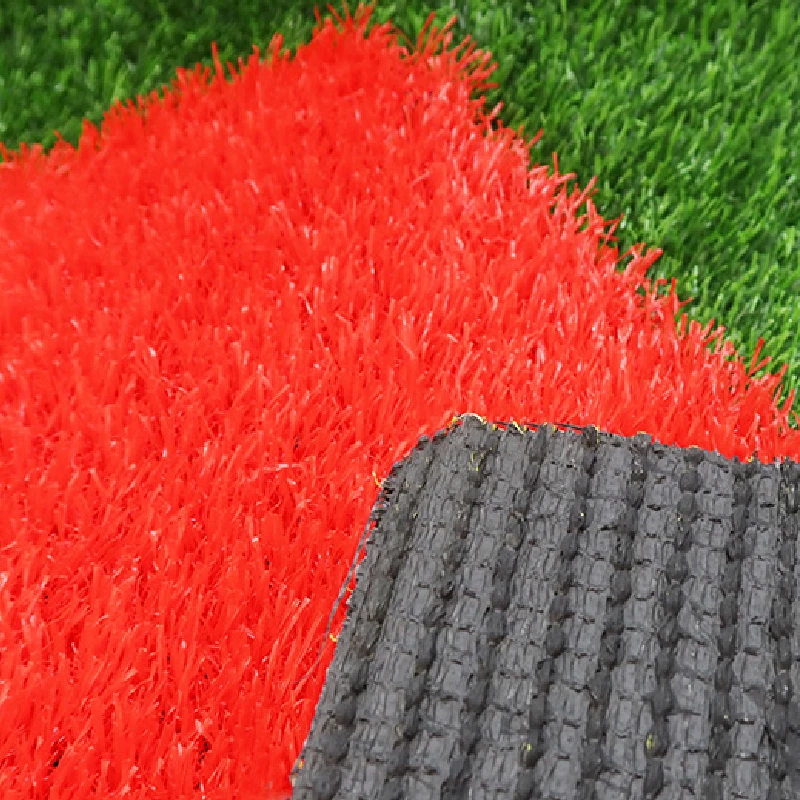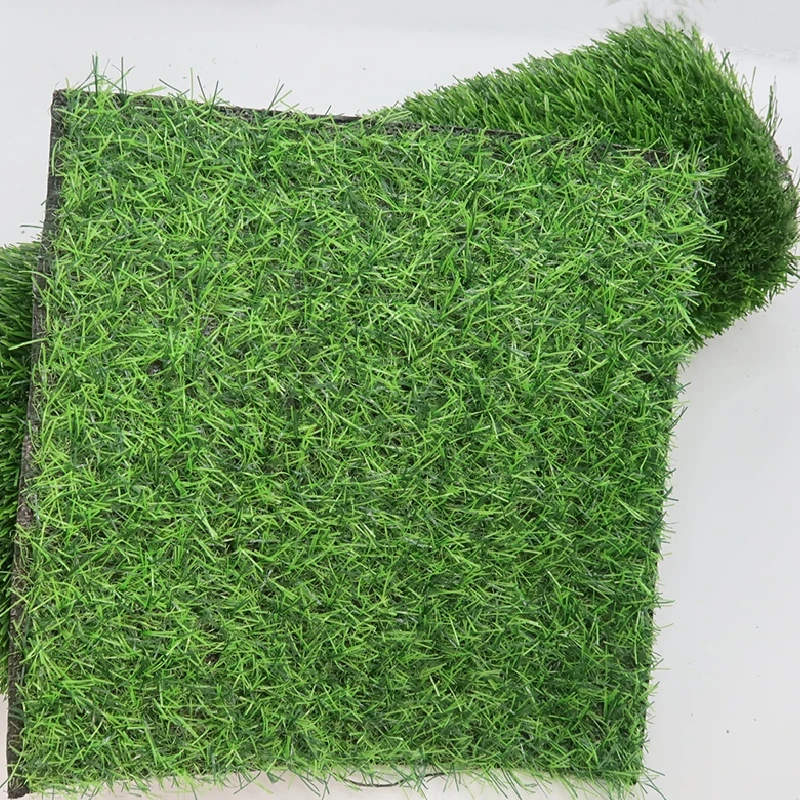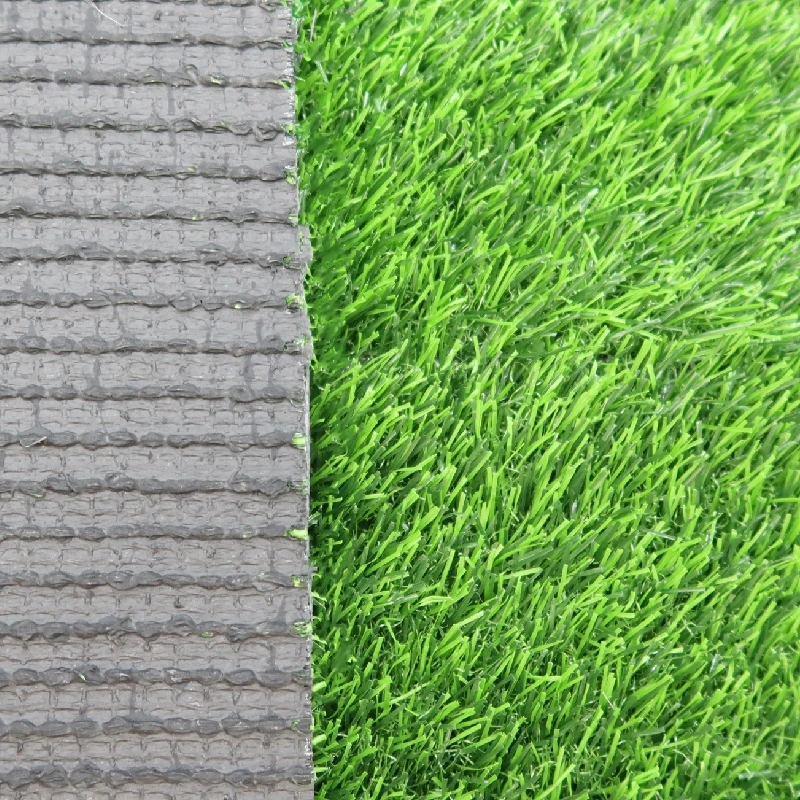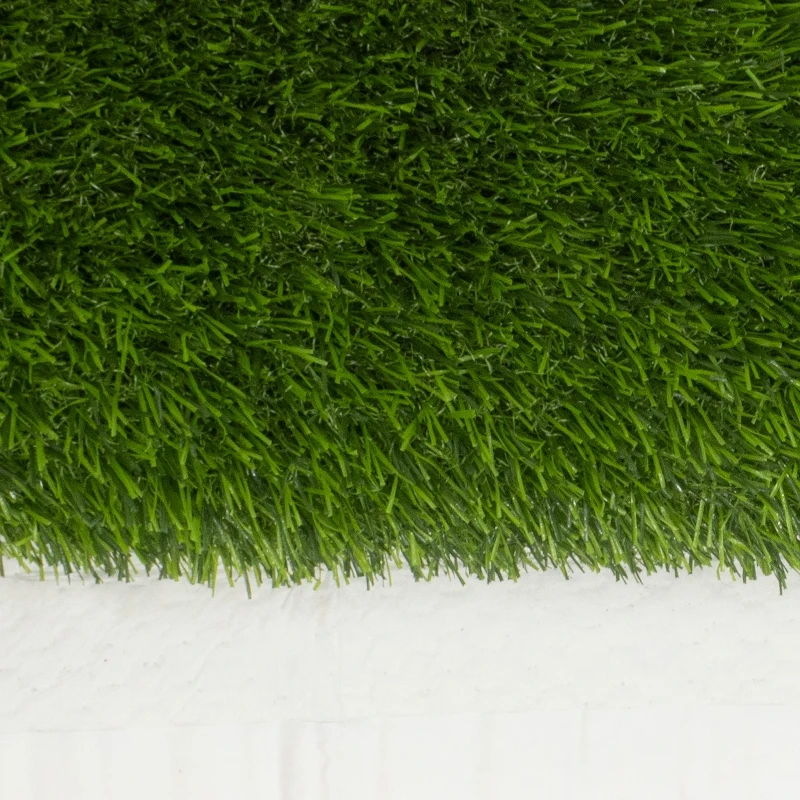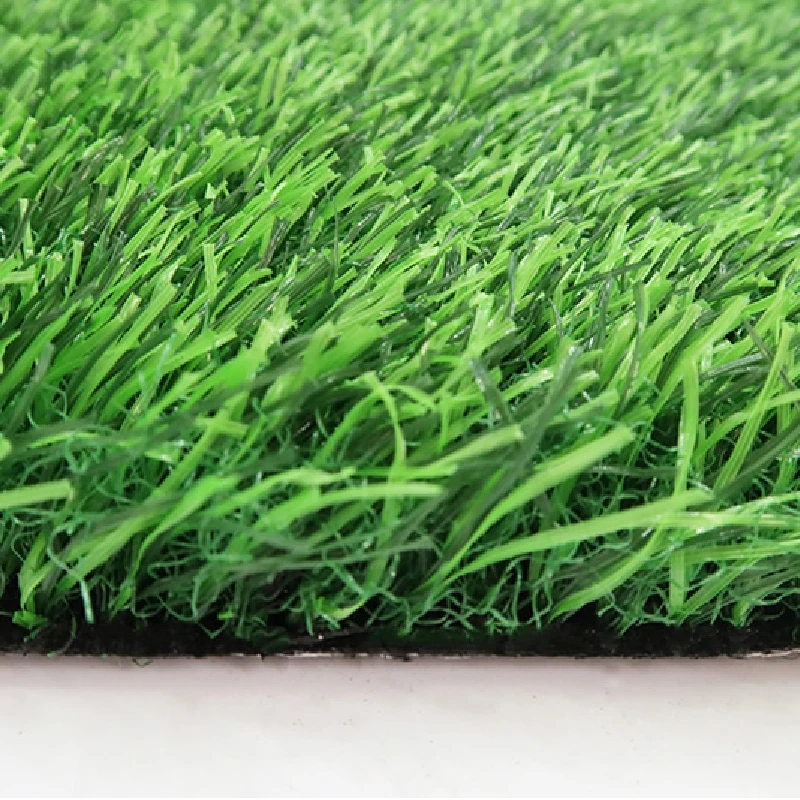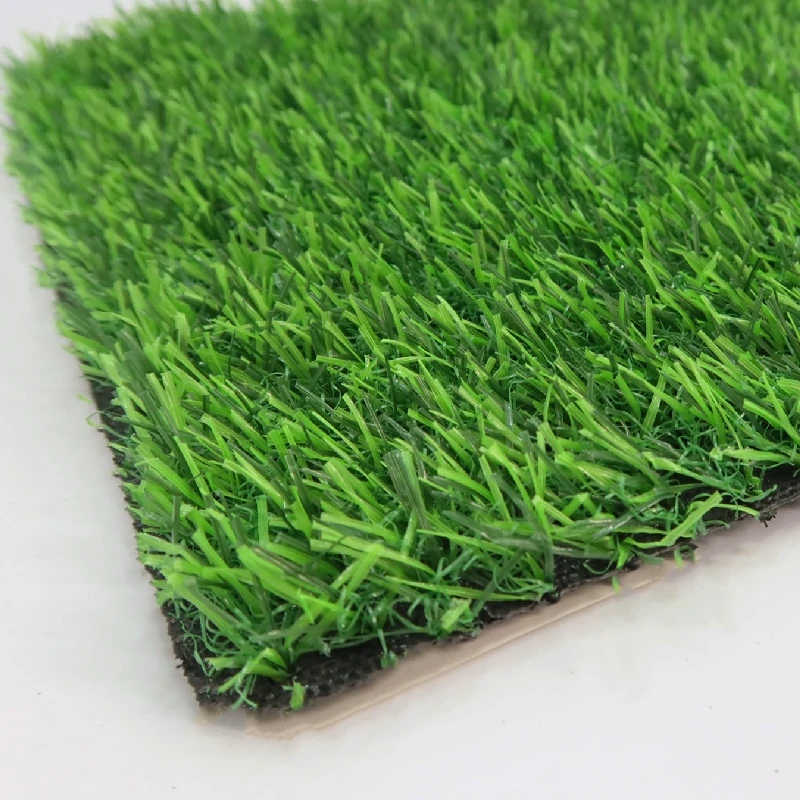
- Afrikaans
- Arabic
- Belarusian
- Bengali
- Czech
- Danish
- Dutch
- English
- Esperanto
- Estonian
- Finnish
- French
- German
- Greek
- Hindi
- Hungarian
- Icelandic
- Indonesian
- irish
- Italian
- Japanese
- kazakh
- Rwandese
- Korean
- Kyrgyz
- Lao
- Latin
- Latvian
- Malay
- Mongolian
- Myanmar
- Norwegian
- Persian
- Polish
- Portuguese
- Romanian
- Russian
- Serbian
- Spanish
- Swedish
- Tagalog
- Tajik
- Thai
- Turkish
- Turkmen
- Ukrainian
- Urdu
- Uighur
- Uzbek
- Vietnamese
Playground Artificial Turf Price: Safe, Durable, Low-Maintenance Solutions
Sep . 25, 2025 14:22 Back to list
Enhancing Play Environments: A Comprehensive Guide to Artificial Turf for Playgrounds
The demand for safe, durable, and aesthetically pleasing playground surfaces has seen significant growth in recent years. As urban development expands and community-focused infrastructure projects become paramount, selecting the right surfacing material is critical for child safety and long-term cost-effectiveness. Artificial turf has emerged as a superior alternative to traditional options, offering a blend of resilience, safety features, and environmental benefits. This guide delves into the technical aspects, market trends, and practical considerations for procuring and implementing such solutions, focusing specifically on the playground artificial turf price, installation, and performance.
The global artificial turf market, valued at approximately USD 3.2 billion in 2022, is projected to reach USD 5.4 billion by 2030, with a significant compound annual growth rate (CAGR) of 6.8%. This growth is largely driven by its adoption in sports fields, landscaping, and increasingly, children's playgrounds. Factors influencing this trend include stringent safety regulations, a desire for reduced maintenance, and the versatility of synthetic grass in various climates. For B2B decision-makers, understanding the comprehensive value proposition beyond the initial investment is key.
Technical Specifications and Manufacturing Process for Playground Artificial Turf
The engineering behind high-quality artificial grass for playgrounds is sophisticated, ensuring both aesthetic appeal and critical safety performance. Our product, Artificial Turf For Green Playgrounds, Boundless Energy, exemplifies these advanced manufacturing principles.
Manufacturing Process Flow: From Fiber to Field
- Fiber Extrusion: High-grade virgin polymers, typically polyethylene (PE) or polypropylene (PP), are melted and extruded through spinnerets to form individual synthetic yarn fibers. These fibers are designed for specific characteristics like softness, resilience, and UV resistance.
- Twisting & Texturizing: The extruded fibers are then twisted or texturized to enhance their durability, natural appearance, and ability to stand upright, resisting matting under heavy foot traffic.
- Tufting: Using specialized tufting machines, these yarns are precisely stitched into a primary backing material, usually woven polypropylene or polyester. This process is akin to carpet manufacturing, creating uniform rows of grass blades.
- Coating Application: The reverse side of the primary backing, where the fibers are stitched, receives a robust secondary coating. Common materials include polyurethane (PU) or styrene-butadiene rubber (SBR) latex. This coating securely locks the fibers in place, preventing shedding and enhancing structural integrity. PU coatings often offer superior adhesion and environmental stability.
- Perforation for Drainage: The coated backing is perforated with drainage holes, typically every few inches, to ensure efficient water permeability. This prevents water pooling and maintains a dry, safe surface.
- Quality Control & Testing: Throughout the process, materials and finished products undergo rigorous testing. Key standards include ISO 9001 for quality management, ISO 14001 for environmental management, and crucial safety standards such as ASTM F1292 (Impact Attenuation of Surfacing Materials Within the Use Zone of Playground Equipment) and ASTM F1951 (Determination of Water Permeability of Synthetic Turf Systems). EN 1177 (Impact Attenuating Playground Surfacing) is also vital for European markets.
- Roll-Up & Packaging: The finished turf is carefully rolled and packaged for shipment, ready for installation.
Product Specifications: Artificial Turf For Green Playgrounds, Boundless Energy
| Parameter | Specification | Benefit / Relevance |
|---|---|---|
| Pile Height | 30mm - 50mm (Adjustable) | Optimal balance of natural feel and critical fall height performance. |
| Dtex | 8,000 - 12,000 | Indicates fiber density and durability; higher Dtex means greater wear resistance. |
| Gauge | 3/8 inch, 5/8 inch | Distance between stitch lines; affects density and overall aesthetic. |
| Stitches/m² | 16,000 - 20,000 (Customizable) | High stitch density provides a lush, resilient, and durable surface. |
| Backing Material | PP + Non-woven + SBR Latex/PU | Superior dimensional stability, strong tuft bind, excellent drainage. |
| UV Stability | >6000 hours (ISO 4892-2) | Ensures color retention and material integrity under prolonged sun exposure. |
| Fall Height Rating | Up to 2.5m (with appropriate shock pad) | Meets critical safety standards like ASTM F1292/EN 1177 for playgrounds. |
| Service Life | 8-15 years | Long-term return on investment; reduced need for frequent replacement. |

The durability and safety of artificial grass for playgrounds are direct results of these meticulously controlled manufacturing steps and the quality of raw materials. Emphasis on UV stability ensures colorfastness and material integrity over its extensive service life, typically ranging from 8 to 15 years, significantly extending the value derived from the initial playground artificial turf price.
Key Technical Advantages of Artificial Grass for Playgrounds
Investing in high-quality artificial turf for playgrounds offers a multitude of technical and operational advantages over natural grass or other traditional surfacing materials.
- Superior Safety & Fall Protection: When combined with an appropriate shock-absorbing underlayment (shock pad), artificial turf systems can achieve Critical Fall Height (CFH) ratings up to 2.5 meters or more, meeting and exceeding standards like ASTM F1292 and EN 1177. This significantly reduces the risk of serious injury from falls.
- Exceptional Durability & Longevity: Engineered with robust fibers (PE/PP Dtex 8,000-12,000) and strong backing systems, artificial turf withstands intensive use, heavy foot traffic, and diverse weather conditions without showing significant wear. This leads to an extended service life and a better return on the initial playground artificial turf price.
- Low Maintenance Requirements: Unlike natural grass, artificial turf eliminates the need for mowing, watering, fertilizing, and pest control. This translates to substantial savings in labor, water, and chemical costs, making it an economically advantageous choice for facility managers.
- All-Weather Playability & Rapid Drainage: Advanced drainage systems (typically 60-80 liters/minute per square meter) ensure playgrounds are accessible shortly after rainfall, maximizing play time and minimizing operational disruptions. The surface remains consistently even and free from muddy patches.
- Hygienic and Antimicrobial Properties: Many modern artificial turf products, including our Artificial Turf For Green Playgrounds, Boundless Energy, can be treated with antimicrobial agents during manufacturing. This inhibits the growth of bacteria, mold, and mildew, contributing to a cleaner and healthier play environment.
- Consistent Aesthetics: Artificial turf maintains a lush, green appearance year-round, regardless of climate or season. This provides a visually appealing and inviting play space that enhances the overall look of any facility.
- Environmental Benefits: Significant water conservation (up to 70% compared to natural grass), elimination of harmful pesticides and fertilizers, and often made with recyclable materials, contribute to a reduced environmental footprint.
Application Scenarios and Target Industries
The versatility and benefits of artificial grass make it an ideal solution across a wide spectrum of applications and industries where children's safety and play are paramount.
- Educational Institutions: Primary schools, kindergartens, and daycare centers heavily benefit from the safety and cleanliness of artificial turf, providing a consistent play surface that withstands daily recess activities.
- Public Parks & Recreational Areas: Municipalities leverage artificial turf for public playgrounds to minimize maintenance costs and ensure long-term durability in high-traffic community spaces.
- Residential Developments & HOAs: Modern residential complexes and Homeowners Associations choose artificial turf for communal play areas due to its low water usage, consistent appearance, and high safety standards, offering an attractive amenity to residents.
- Commercial Establishments: Restaurants with outdoor play zones, shopping centers, and theme parks utilize artificial turf to create inviting, safe, and easily maintainable play environments that enhance customer experience.
- Healthcare Facilities: Pediatric hospitals or rehabilitation centers with outdoor therapeutic play spaces can benefit from the soft, uniform surface of artificial turf for gentle recovery and safe recreation.

In all these scenarios, the long-term operational savings and enhanced safety profile often justify the initial playground artificial turf price, providing a superior solution over its lifespan. For industries facing strict health and safety regulations, the compliance offered by certified artificial turf systems is invaluable.
Vendor Comparison and `playground artificial turf price` Analysis
Understanding the factors that influence playground artificial turf price is crucial for making an informed purchasing decision. The market offers a range of options, and discerning quality from cost-cutting is vital for long-term satisfaction and safety. Key pricing determinants include material quality, pile height, stitch density, backing type, infill requirements, and warranty.
Factors Influencing Playground Artificial Turf Price:
- Fiber Quality & Dtex: Higher-grade, more resilient fibers with higher Dtex values (e.g., 10,000-12,000) are more expensive but offer superior durability and appearance.
- Pile Height & Density: Taller pile heights (e.g., 40-50mm) and denser turf (higher stitches per m²) require more material, increasing cost but also improving softness, resilience, and often critical fall height performance.
- Backing System: Polyurethane (PU) backing, while potentially higher in initial cost than SBR latex, offers superior tuft bind, dimensional stability, and resistance to environmental degradation, leading to a longer lifespan.
- Infill Type: The type of infill (silica sand, crumb rubber, TPE, EPDM, or organic infills) and its quantity significantly affect both material and installation costs. Each offers different performance characteristics regarding impact absorption, cooling, and antimicrobial properties.
- Shock Pad System: For playground applications, an underlying shock pad is often mandatory to meet CFH requirements. The thickness and material of this pad directly impact the overall project cost.
- Certifications & Warranty: Products with reputable safety certifications (ASTM, EN, ISO) and comprehensive warranties often reflect higher manufacturing quality and a commitment to performance, justifying a potentially higher initial cost.
Comparative Analysis of Artificial Turf for Playgrounds
| Feature | Standard Turf (Cost-Effective) | Premium Turf (e.g., Boundless Energy) |
|---|---|---|
| Fiber Material | PE/PP blend, lower Dtex | 100% Virgin PE, higher Dtex (e.g., 10,000-12,000) |
| Pile Height | 20mm-30mm | 30mm-50mm |
| Stitch Rate/m² | ~12,000-14,000 | ~16,000-20,000 |
| Backing Type | SBR Latex | PP + Non-woven + PU/High-grade SBR |
| UV Resistance | ~4000 hours | >6000 hours (ISO 4892-2) |
| CFH Rating (with pad) | Up to 1.5m-2.0m | Up to 2.5m-3.0m |
| Expected Lifespan | 5-8 years | 8-15 years |
| Warranty | 5-8 years | 10-15 years |

While the initial playground artificial turf price for premium products may be higher, the extended lifespan, superior safety ratings, and reduced long-term maintenance costs often result in a lower Total Cost of Ownership (TCO). This makes premium solutions like Artificial Turf For Green Playgrounds, Boundless Energy a more strategic investment for high-traffic or regulated environments.
Customized Solutions and Installation Excellence
Beyond standard offerings, modern artificial turf solutions for playgrounds provide extensive customization options, allowing projects to meet specific aesthetic and functional requirements. Furthermore, professional installation is paramount to achieving the desired safety and longevity.
Tailored Turf for Unique Play Spaces
Customization can significantly enhance a playground's appeal and functionality without disproportionately impacting the overall playground artificial turf price. Options include:
- Color Variations: Beyond traditional green, turf can be manufactured in a spectrum of colors to create patterns, zones, or thematic designs, boosting visual engagement.
- Pile Height and Density: Adjusting these parameters allows for different levels of softness, resilience, and specific fall height requirements, tailoring the surface to varying equipment or age groups.
- Integrated Logos & Markings: Company logos, hopscotch, numbers, or other game markings can be seamlessly integrated into the turf during installation, offering branding opportunities or enhancing play activities.
- Specialized Infill Systems: Customized infill choices, such as specialized rubber granules or organic materials, can be selected based on climate (e.g., cooling properties), desired softness, or environmental considerations.
- Custom Shock Pad Configurations: Different thickness and density shock pads can be layered to meet precise Critical Fall Height requirements for varied playground equipment.

Expert Installation: How to Install Artificial Grass for Playground Surfaces
Proper installation is as crucial as the quality of the turf itself to ensure longevity, optimal performance, and compliance with safety standards. The process of how to install artificial grass for playground surfaces involves several critical steps:
- Site Preparation & Base Work: This involves excavation to the required depth, ensuring proper grading for drainage, and laying a compacted aggregate base (e.g., decomposed granite or crushed rock). The base must be stable and porous.
- Drainage System Integration: Installation of proper perimeter drainage or ensuring the sub-base allows for efficient water runoff is critical to prevent waterlogging.
- Shock Pad Installation: For playgrounds, a certified shock-absorbing underlayment is meticulously laid over the prepared base. This pad is essential for achieving the required Critical Fall Height ratings.
- Turf Laying & Seaming: Artificial turf rolls are carefully laid out, cut to fit the contours of the play area, and then precisely seamed together using specialized adhesive and seaming tape. Invisible seams are key to a seamless look and uniform surface.
- Infill Application: Appropriate infill material (e.g., silica sand, crumb rubber, or organic infill) is evenly spread and brushed into the turf fibers. Infill helps the fibers stand upright, provides ballast, and contributes to impact absorption.
- Final Grooming & Inspection: The turf is brushed against the grain to fluff up the fibers, and a final inspection ensures all seams are secure, infill is evenly distributed, and the surface meets all safety and aesthetic specifications.
Engaging certified and experienced installers is highly recommended to ensure compliance with relevant safety standards (e.g., ASTM F1292, EN 1177) and to maximize the lifespan and performance of your artificial grass for playgrounds investment.
Case Studies and Customer Experience
Real-world application demonstrates the tangible benefits and value derived from investing in high-quality artificial grass for playgrounds. Our experience across various sectors highlights how our products consistently deliver on safety, durability, and cost-efficiency.
Case Study 1: Urban Community Park Revitalization
A large municipal park faced challenges with its natural grass playground, including persistent muddy patches, high maintenance costs, and difficulty meeting evolving safety standards. After a detailed analysis of the playground artificial turf price and long-term savings, the city opted for our 'Boundless Energy' turf with a 45mm pile height and specialized shock pad. The installation covered 1,500 square meters. Post-installation, the park reported a 70% reduction in water usage for the play area, a 60% decrease in overall maintenance hours, and a 100% compliance rate with ASTM F1292 Critical Fall Height requirements for all equipment. Public feedback lauded the clean, green, and safe environment, leading to increased visitor numbers.
Case Study 2: Private Daycare Facility Upgrade
A premium daycare center sought to upgrade its outdoor play area to provide a safer, more hygienic, and visually appealing surface for toddlers and young children. Concerns included allergies, pest control associated with natural grass, and fall protection. Our customized solution included a 35mm pile height turf with integrated antimicrobial properties and a dual-layer shock pad to achieve a 2.0-meter CFH rating. The initial playground artificial turf price was factored against projected savings in landscape maintenance and enhanced appeal to parents. The facility now enjoys a pristine, mud-free play area that requires minimal upkeep and provides superior fall protection, significantly improving parental satisfaction and enrollment rates.
Customer Feedback:
"The installation of Hoyarngrass artificial turf transformed our school playground. The children love the soft, green surface, and as administrators, we appreciate the significant reduction in maintenance and the peace of mind knowing we've exceeded safety standards. The initial playground artificial turf price was a worthwhile investment for the long-term benefits."
— Facilities Manager, Evergreen Elementary School.
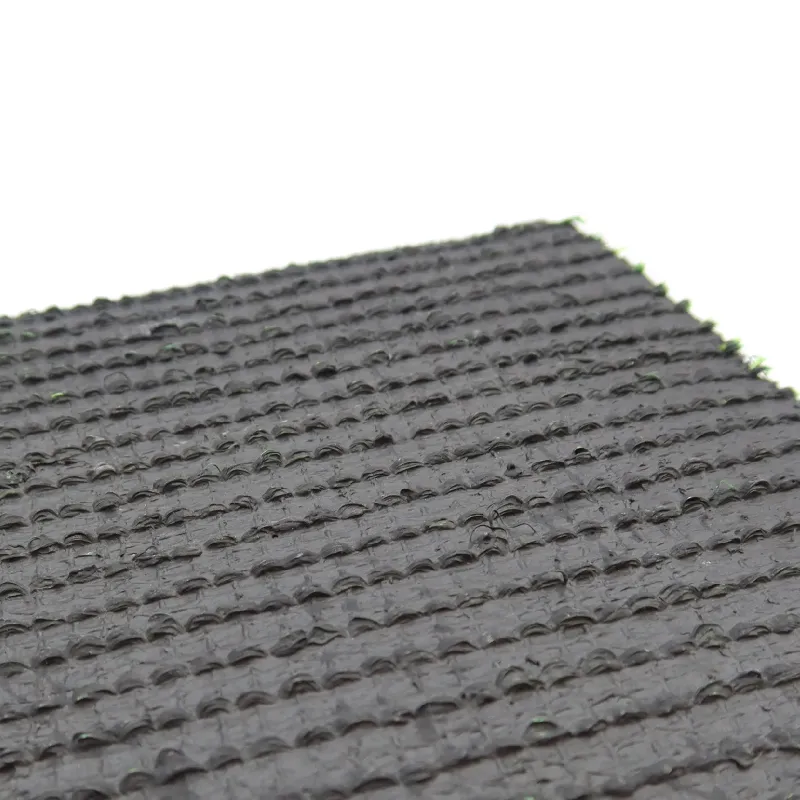
Authoritativeness and Trustworthiness
Our commitment to quality, safety, and customer satisfaction is underpinned by industry certifications, comprehensive warranties, and reliable customer support, establishing us as a trusted partner for artificial grass for playgrounds.
Certifications and Compliance:
- ISO 9001:2015: Certified for Quality Management Systems, ensuring consistent product quality and customer satisfaction.
- ISO 14001:2015: Certified for Environmental Management Systems, reflecting our commitment to sustainable manufacturing practices.
- ASTM F1292 & F1951: Our playground turf systems are tested and compliant with American Society for Testing and Materials standards for impact attenuation and water permeability, crucial for playground safety.
- EN 1177: Compliance with European standards for impact-absorbing playground surfacing.
- CE & RoHS: Products meet European health, safety, and environmental protection standards.
- SGS Lead-Free Certification: Ensuring our turf is free from harmful heavy metals, making it safe for children.
Warranty and Service Commitments:
- Warranty: Our Artificial Turf For Green Playgrounds, Boundless Energy, comes with a comprehensive 10 to 15-year limited warranty, covering UV degradation, tuft bind, and material defects. This protects your investment and ensures peace of mind regarding the long-term performance after the initial playground artificial turf price.
- Lead Time & Fulfillment: Standard lead times for product manufacturing are typically 15-25 business days, depending on order volume and customization. We maintain efficient logistics to ensure timely delivery to your project site.
- Customer Support: Our dedicated B2B customer support team provides expert consultation, technical assistance, and after-sales service. We offer personalized project planning, installation guidance, and maintenance advice to maximize the lifespan and effectiveness of your turf system.
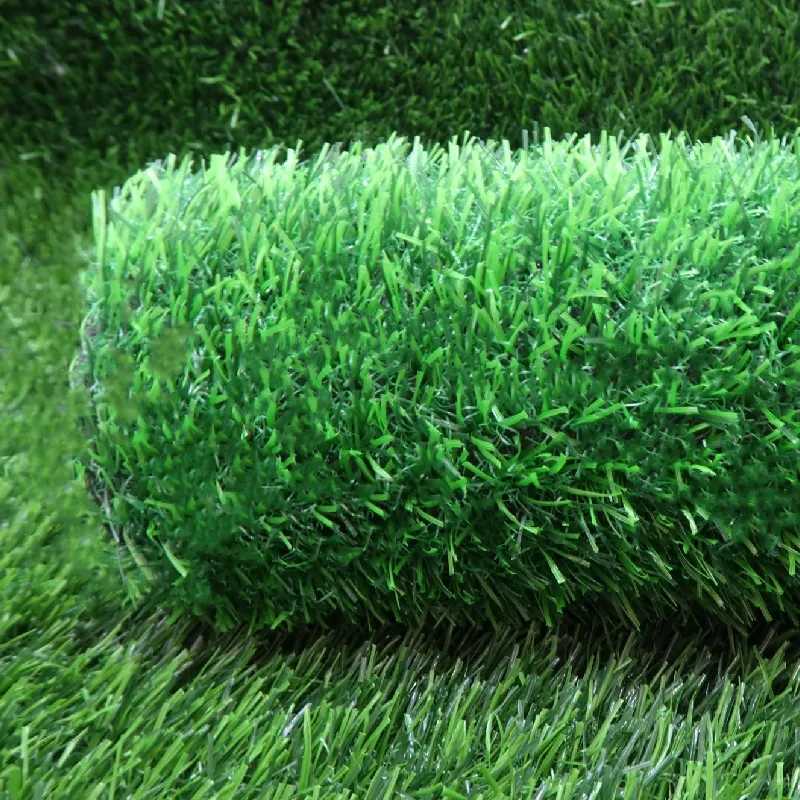
Frequently Asked Questions (FAQ)
- Q: What factors primarily influence the playground artificial turf price?
- A: The primary factors are fiber quality (Dtex), pile height, stitch density, backing material (PU vs. SBR), the need for a shock pad, infill type, and project size. Higher quality materials and denser turf generally lead to a higher initial cost but offer superior durability and longer lifespans.
- Q: What is the typical service life of artificial grass for playgrounds?
- A: High-quality artificial turf, like our 'Boundless Energy' product, is designed to last 8 to 15 years, depending on traffic, climate, and maintenance. Our warranty reflects this expected durability.
- Q: Is artificial turf safe for children, especially regarding falls?
- A: Absolutely. When installed with an appropriate shock-absorbing underlayment, our artificial turf systems meet critical safety standards (ASTM F1292, EN 1177) for fall height protection, significantly reducing injury risks. Our products are also lead-free and often include antimicrobial treatments for hygiene.
- Q: How do you maintain artificial grass for playgrounds?
- A: Maintenance is minimal. Regular brushing to keep fibers upright, removing debris, and occasional rinsing with water are usually sufficient. For playgrounds, periodic infill replenishment and deep cleaning might be recommended for optimal hygiene and performance. It eliminates the need for mowing, watering, or fertilizing.
- Q: What about drainage? Will water pool on the surface?
- A: Our artificial turf products feature perforated backings that allow for excellent drainage, typically exceeding 60 liters per minute per square meter. When installed correctly over a permeable sub-base, water drains efficiently through the turf, preventing pooling and ensuring quick usability after rain.
- Q: Can this turf withstand heavy foot traffic?
- A: Yes, our 'Boundless Energy' product is specifically engineered with high Dtex fibers and dense construction to withstand heavy foot traffic common in playgrounds, ensuring long-lasting resilience and appearance.
Conclusion
The decision to invest in artificial turf for playgrounds represents a forward-thinking approach to creating safe, sustainable, and aesthetically pleasing play environments. While the initial playground artificial turf price is a significant consideration, the long-term benefits in terms of safety compliance, drastically reduced maintenance, extended product lifespan, and environmental stewardship offer a compelling return on investment for B2B stakeholders. By prioritizing certified products and professional installation, organizations can ensure that their artificial grass for playgrounds not only meets but exceeds operational and safety expectations, providing boundless energy for children for years to come.
References
- Grand View Research. (2023). Artificial Turf Market Size, Share & Trends Analysis Report By Application (Sports, Landscaping, Leisure), By Raw Material (Polyethylene, Polypropylene, Nylon), By Region, And Segment Forecasts, 2023 - 2030. Available at: [https://www.grandviewresearch.com/industry-analysis/artificial-turf-market]
- ASTM International. (2023). ASTM F1292 - Standard Specification for Impact Attenuation of Surfacing Materials Within the Use Zone of Playground Equipment. Available at: [https://www.astm.org/f1292-23.html]
- ISO (International Organization for Standardization). (2023). ISO 9001:2015 Quality management systems — Requirements. Available at: [https://www.iso.org/standard/62085.html]
- European Committee for Standardization. (2008). EN 1177: Impact attenuating playground surfacing - Determination of critical fall height. Available at: [https://standards.cen.eu/dyn/www/f?p=204:110:0::::FSP_PROJECT,FSP_LANG_ID:27082,21&cs=124040BB74032C4112F5A3E0993952D75]
-
Durable, Eco-Friendly Turf for Balcony | Enhance Your Urban Space
NewsNov.24,2025
-
Turf Between Pavers: Sustainable Green Paving Solutions for Modern Urban Spaces
NewsNov.24,2025
-
Discover the Benefits of Turf and Pavers Backyard | Sustainable Outdoor Design
NewsNov.24,2025
-
Top Quality Artificial Grass – Sustainable, Durable, and Stylish Turf Solutions
NewsNov.24,2025
-
Durable and Eco-Friendly Thick Artificial Grass Solutions | Hoya Grass
NewsNov.24,2025
-
Synthetic Turf: Sustainable Green Solutions for Sports, Industry & Urban Living
NewsNov.24,2025
Products categories


